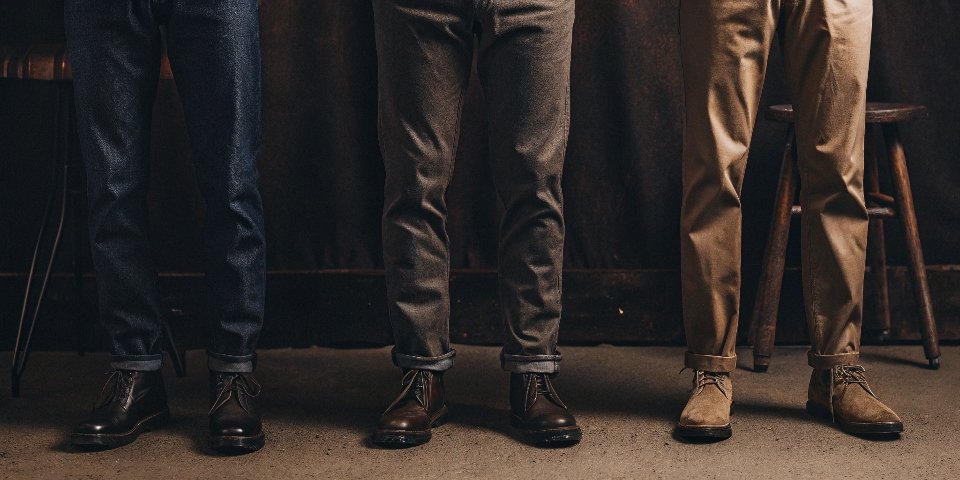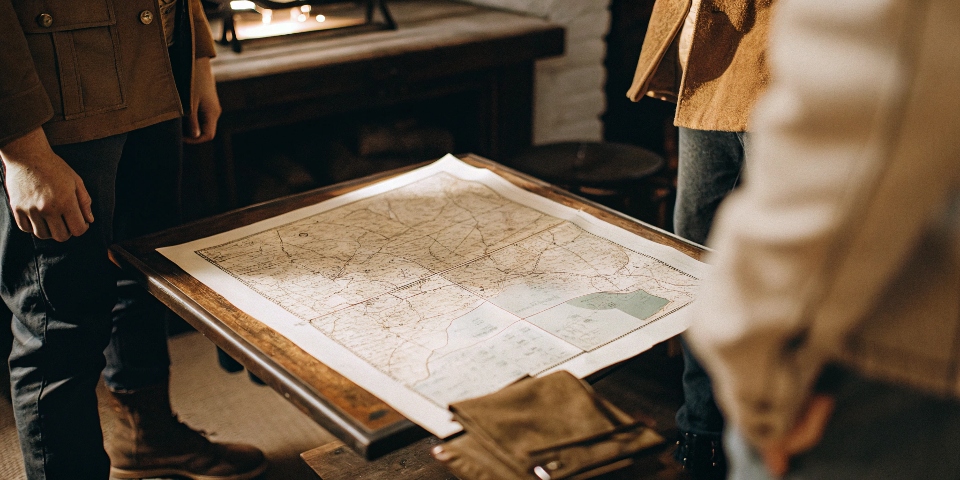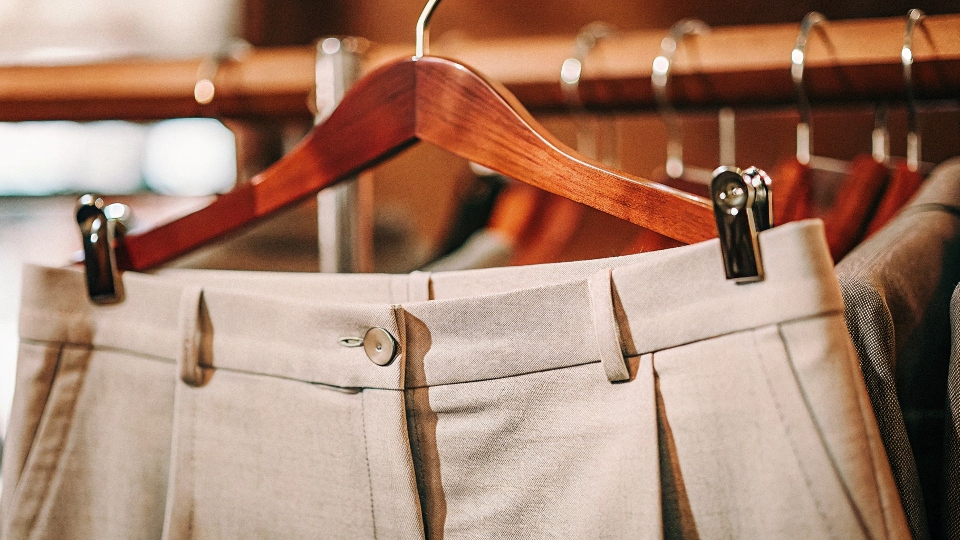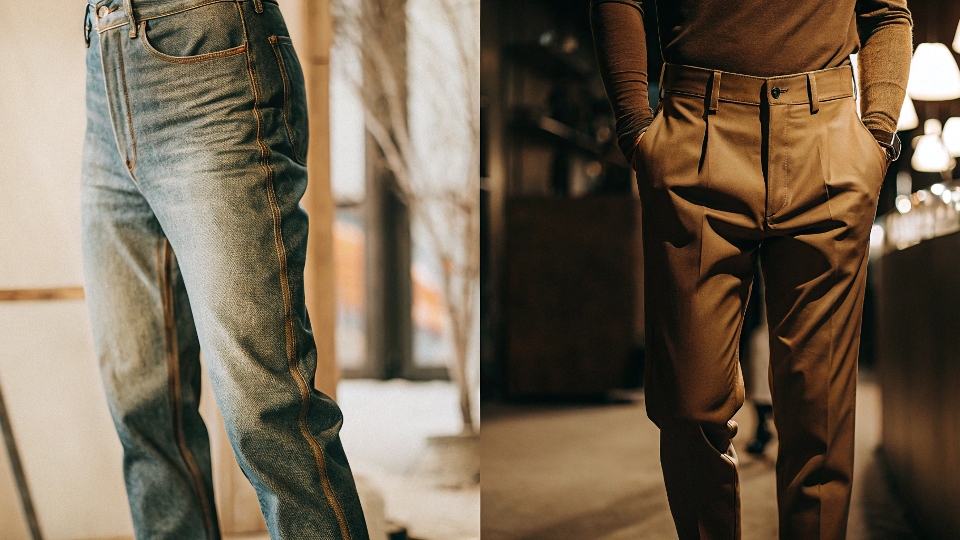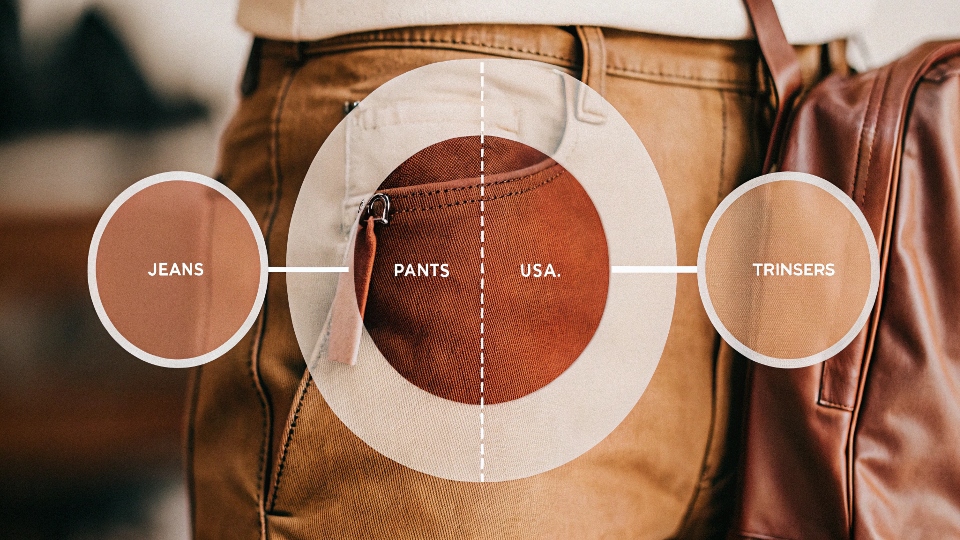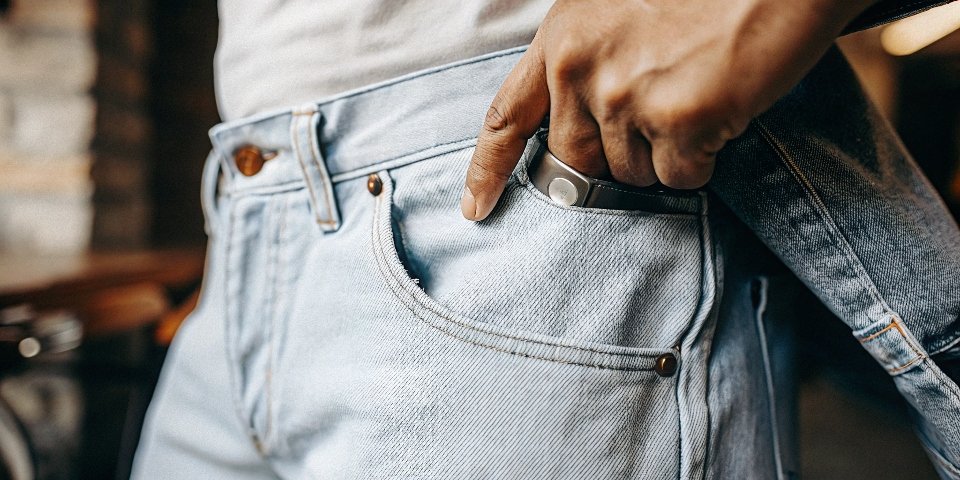You're trying to describe a product, but you hesitate. Should you call them pants, trousers, or jeans? Using the wrong word can cause confusion, especially when you're talking to people from different parts of the world.
Jeans are a type of pants made specifically from denim fabric. In America, "pants" is a general term for all legwear, while "trousers" refers to more formal pants. In the UK, "pants" means underwear.
This is a question I deal with every single day. The words we use matter, especially in a global industry like apparel. Your insight about the US and UK difference is spot on and causes some of the biggest mix-ups.
I once spent ten minutes on a video call with a new designer from London who kept talking about his vision for a new "pants" line.I was confused, thinking he was expanding into underwear. Finally, he held up a pair of jeans and I realized my American English was getting in the way.
We had a good laugh, but it taught me a valuable lesson: clear language saves time and prevents costly mistakes. Let's break down these terms so you never have that moment of confusion again.
Why do Americans say pants not trousers?
You watch American movies and hear everyone say "pants." Then you watch a British show and it's all "trousers." You're left wondering why two countries that speak English use completely different words for the same thing.
Americans say "pants" because it became the default, simplified term for all kinds of legwear, evolving from the word "pantaloons." In the UK, "pants" specifically means underwear, so they use "trousers" to avoid confusion.
This difference is a perfect example of how language evolves. Both words have an interesting history. "Pants" is a shortened version of "pantaloons," a type of tight-fitting legwear from centuries ago.
In the United States, as language does, we simplified. "Pants" became the easy, catch-all term for everything from suit slacks to cargo shorts. "Trousers" just sounds a bit more formal or even old-fashioned to the American ear.
In the UK, the original meanings held on more strongly. "Trousers" remained the primary word for outer legwear, while "pants1" became the common term for what you wear underneath them.
This is the single most important regional difference to remember. It’s why that London designer looked at me so strangely when I asked about his new "pants" design.
| Region | "I need to buy new pants." | "I need to buy new trousers." |
|---|---|---|
| USA | You are shopping for jeans, dress slacks, or any outerwear for your legs. | You are specifically shopping for more formal, tailored pants. |
| UK | You are shopping for underwear. | You are shopping for what Americans call "pants." |
What pants are considered trousers?
You know "trousers" sounds more formal than "pants," but you're not sure exactly where the line is drawn. You wonder which specific features make a pair of pants qualify as "trousers" in a designer's or tailor's eyes.
Trousers are structured, tailored pants typically made from woven fabrics like wool, linen, or high-quality cotton twill. They are defined by formal details like a pressed center crease, a flat or pleated front, and non-denim material.
When a designer like Dean sends me a tech pack for "trousers," I know exactly what to look for. It's about a combination of material, construction, and context.
The fabric is never denim. It's usually a finer material like wool, polyester blends, linen2 for summer, or the cotton twill used for chinos.The construction is also different from your casual five-pocket pants.
Trousers often feature a hook-and-bar closure above the zipper for a flatter front. The pockets are more discreet, like slash pockets on the side or jetted pockets on the back. Many have a distinct, sharp crease pressed down the center of each leg.
These are not pants for rugged work; they are tailored for the office, formal events, or smart-casual occasions. So, while dress slacks and chinos are trousers, things like joggers, cargo pants, and jeans are not.
| Characteristic | Trousers | Other Pants (e.g., Jeans, Joggers) |
|---|---|---|
| Fabric | Wool, linen, polyester, cotton twill (chinos) | Denim, fleece, heavy canvas |
| Construction | Tailored fit, pressed crease, hook closure | Casual fit, five-pocket design, elastic waist |
| Common Context | Business, formal events, smart-casual | Casual wear, workwear, sports |
Can you call jeans trousers?
You're wearing a nice, dark pair of jeans and want to describe them in a more elevated way. You wonder if you can correctly call them "denim trousers," but something about the phrase doesn't sound quite right.
No, you generally cannot call jeans "trousers." The term "jeans" refers to a very specific construction (five-pocket, rivets) and material (denim) that separates them from the more formal category of trousers.
Calling a pair of jeans "trousers" is like calling a pickup truck a "sedan." While both are vehicles, their construction and purpose are fundamentally different. Jeans are defined by their workwear BONES. They have five pockets3.
They have metal rivets for strength. Their seams are built for durability, not for elegant draping. Their soul comes from denim, a rugged cotton twill made for hard labor. Trousers, as we just discussed, are the opposite. They are defined by tailored elegance.
Now, a designer can create a hybrid. I've worked on projects for "denim trousers4" before. These are pants that use denim fabric but are cut in a trouser silhouette—perhaps with pleats, slash pockets, and no rivets.
But in that case, the name is very specific. Your classic pair of Levi's, Wranglers, or any standard five-pocket jean is just that: a jean. Not a trouser.
Can trousers be called pants?
Now you understand the specifics. So, you wonder if it works the other way around. Can you use the general, umbrella term "pants" to describe a very specific pair of formal trousers?
Yes, in the United States, all trousers can be called pants. "Pants" is the broad category that includes everything. In the UK, while this is technically true, they would almost always prefer the more specific term "trousers."
This is where American English makes things simple. Think of it like this: all apples are fruit, but not all fruit are apples. In the US, all trousers are pants, but not all pants are trousers. "Pants" is the super-category.
If you walk into a store in New York and say "I'm looking for some pants," the salesperson could show you jeans, chinos, or suit trousers5, and they would be correct every time. As a manufacturer, however, this general term isn't very helpful.
When a client says they are developing a new "pant," my immediate follow-up is always, "What kind of pant?" We need specifics to do our job.Is it a five-pocket jean? A four-pocket chino?
A pleated formal trouser? Using the specific term saves time and eliminates guesswork. So while you can call trousers 'pants', using the more precise word is always better in a professional setting.
How do I know if pants are jeans?
You're looking at a pair of blue cotton pants. They look a bit like jeans, but something is off. You need a quick mental checklist to definitively identify whether what you're holding is a real pair of jeans.
To know if pants are jeans, check for three things: the fabric's diagonal weave, the classic five-pocket design, and the presence of metal rivets on the front pockets. If they have all three, they are jeans.
As someone who has seen millions of pairs of pants, I have a three-step process anyone can use to identify a true jean. It’s based on the original, patented design that made them famous.
- Check the Fabric: Look closely at the material. Is there a visible diagonal line in the weave? That's the signature twill of denim. If the weave looks flat or like a grid, it's not denim.
- Count the Pockets: A classic jean has five pockets: two in the back, two in the front, and one small "coin pocket" tucked into the top of the right front pocket. If that fifth pocket is missing, it’s a big clue that you're looking at a different style of pants, like a chino.
- Find the Rivets: This is the ultimate test. Look at the top corners of the front pockets. Do you see small, circular metal studs? Those are rivets, the feature patented in 1873 to stop pants from ripping. If the pants have thread reinforcement (a bar tack) instead of metal, they might be "denim pants," but they lack the key hardware of true "jeans."
| Feature Check | Yes, It's Likely a Jean | No, It's Likely Not a Jean |
|---|---|---|
| Denim Twill Weave6? | ✔️ | ❌ |
| Five-Pocket Design7? | ✔️ | ❌ |
| Metal Rivets on Pockets? | ✔️ | ❌ |
Conclusion
Jeans are pants made from denim with a specific five-pocket, riveted design. Trousers are formal pants, and what you call "pants" depends entirely on which side of the Atlantic you're on.
-
Explore the fascinating evolution of the word 'pants' and its cultural significance in language. ↩
-
Explore this link to discover the ideal fabrics for trousers, enhancing your understanding of style and comfort. ↩
-
Discover the significance of the five-pocket design in jeans, enhancing both functionality and style. ↩
-
Explore this link to understand the unique features and styles of denim trousers, and how they blend comfort with elegance. ↩
-
This resource will clarify the distinctions between trousers and pants, helping you navigate clothing terminology effectively. ↩
-
Understanding denim twill weave is essential for recognizing authentic jeans. Explore this link to learn more about its characteristics. ↩
-
The five-pocket design is a hallmark of true jeans. Discover its significance and history by checking out this informative resource. ↩

